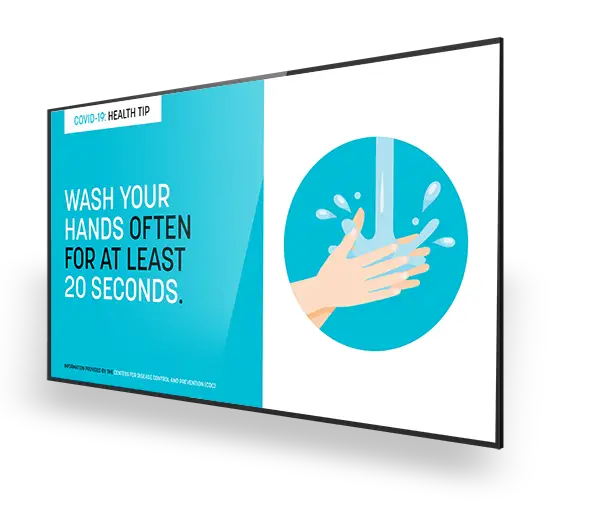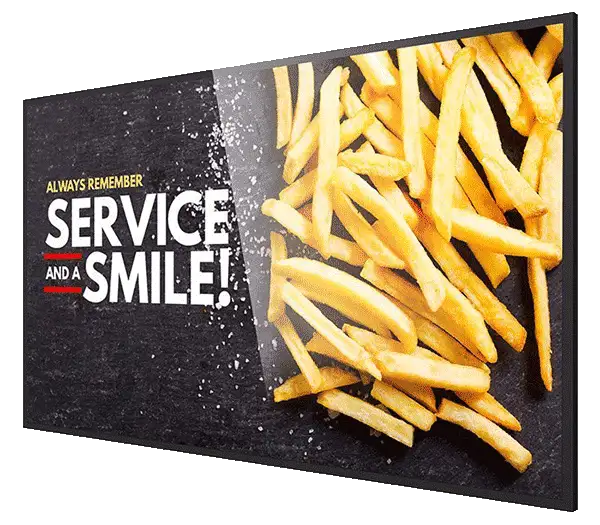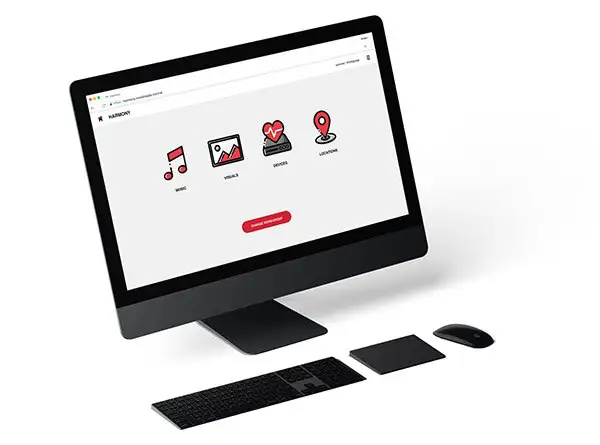THE VALUE OF DIGITAL SIGNAGE DURING COVID-19 & BEYOND
As we begin to move into the recovery phase of the COVID-19 outbreak and a new normal, consumers and employees want to be assured that the places they choose to shop, dine, stay, work, seek entertainment and receive healthcare are safe and sufficiently sanitized. Consequently, businesses from all industries are now challenged to take the appropriate measures to provide this necessary level of assurance.
Digital signage is far beyond the trend stage. In fact, it’s an expectation of today’s tech-savvy consumer, and it presents a multitude of key advantages for succeeding during uncertain times. In this article, you’ll learn about those advantages and the key elements of a content strategy that aligns with your efforts to provide safety and assurance.
Advantage #1: Visual Appeal
Digital signage is an incredibly powerful tool for communication, thanks to its unique ability to captivate your audience and satisfy our innate appeal to dynamic visual content. If you really want to effectively communicate your commitment to safety and sanitization, then digital signage needs to be a key component of your post-COVID-19 content marketing strategy.
Additionally, digital signage generally has a sleek, professional look that makes a positive impression on your audience. As a result, such an impression can further boost the general perception of your brand.
Advantage #2: Easy to Read
Digital signage tends to be very easy to read, providing clean legibility that ensures that your critical messaging is clearly seen and understood. This advantage is especially important if your audience consists of senior citizens.
Advantage #3: High Versatility and Customization
Digital signage provides a variety of templates and layouts to choose from, enabling you to maximize space on each screen with multiple zones that serve varying purposes. For instance, a central zone can display short videos that represent your commitment to safety or simple messages, such as “Please Maintain a Distance of 6 Feet,” or “Our employees are required to wash their hands every 20 minutes.” You may also have other zones on the same screen that display promotional content, weather feeds, or capacity count, to name a few examples.
Advantage #4: Simple and Efficient to Update
One of the most important advantages of digital signage is its unique ability to be instantly updated. Most solutions are supported by enterprise-level content management systems that enable users to manage content displayed on screens at one location, groups of locations, or across an entire footprint.
You can push updates immediately or schedule them ahead of time, ensuring that your messaging is always relevant and up to date. This advantage is critically important in the event of emergency communications and when faced with the need to communicate quickly and consistently at scale.
Advantage #5: Cost and Time Efficiency
The ability to instantly update content through a digital medium means that the display of your messaging isn’t dependent upon lengthy turnaround times in production and operational logistics. An added benefit is reduced reliance on printed materials, which can reduce costs and eliminate waste when signage is no longer relevant.
Advantage #6: Enhanced Safety with Digital Menu Boards
For quick service, fast casual and even some full service restaurants, digital menu boards are a sanitary alternative to printed menus, limiting the amount of objects your customers come in contact with at your business.
Now that you’ve learned the primary advantages of digital signage during uncertain times, let’s take a look at the key elements of a content strategy that properly aligns with your safety and assurance efforts.
(COVID-19) CONTENT STRATEGY
No matter what messages you’re aiming to convey or who your audience may be, your content strategy is your roadmap for success with digital signage. Without a sound and clear content strategy, your messages will become disjointed, your audience confused and your ROI diminished.
As you look to build trust and assurance in the safety of your business, you need to be clear on how digital signage will help you pursue this effort. You need to consider:
- Who you’re trying to reach: customers and employees
- What you want to communicate when you reach them
- Who is going to create and manage the content
Let’s take a look at what that content strategy might look like.

Customer-facing Content
Common content examples include:
- Best practices for shopping safely:
- Wear a mask
- Wash hands for at least 20 seconds
- Use hand sanitizer located throughout the store
- Maintain distance of 6 ft.
- Avoid touching your face
- Cough into your elbow
- Highlighting safety measures you’ve taken
- Cleaning and sanitization methods
- Social distancing markers at checkouts
- Installation of sneeze guards and protective glass
- Compliance with regulations – occupancy levels, hours of operation, etc.
- Employee policies and standards
- Additional content to add value to the Customer Experience
- Health and wellness tips
- Executive messaging
- Personal testimonials from employees
- How your business has given back to the community
- Emergency communications
- Have a plan in place
- Prepare potential messaging ahead of time
Displaying this type of content and being prepared not only helps your customers – it demonstrates your commitment to safety and assurance while helping you actively work towards achieving your objectives.
Team Communications/Back-of-House Content
Common back-of-house content examples include:
- Best practices for working safely:
- Wear a mask
- Wash hands frequently throughout the day, for at least 20 seconds
- Maintain distance of 6 ft.
- Avoid touching your face
- Cough into your elbow
- Avoid shaking others’ hands
- Maintain a clean work area
- Training
- Customer service tips
- Cleaning & sanitization instructions
- Human resources information
- Health & wellness tips
- Important announcements
- Employee recognition
- Job openings and referral incentives
- Emergency procedures
- Work area alerts (e.g., PPE required, Do Not Enter)


Content Creation & Management
As previously mentioned, the beauty of most digital signage solutions is that they are supported by flexible content management systems that enable you to instantly update your content across your entire footprint.
It’s best to have dedicated resources that create and regularly manage your content, so that you can ensure your content is always relevant, appealing and up to date. If you don’t have in-house resources for the task, we highly recommend choosing an experienced digital signage provider that can develop and manage your content on your behalf. You’ll save time and get the most value for your investment in this technology.
When executed with a clear and focused content strategy, digital signage will be an invaluable tool for fulfilling and demonstrating your commitment to providing safety and assurance at your business. You’ll create that essential level of trust in your customers and employees to help you navigate your way through recovery and ensure your long-term success. For more information, download the resources below, or contact us to schedule a free digital signage consultation.
CONNECT WITH US
Elevate your Customer Experience through the power of Mood.
